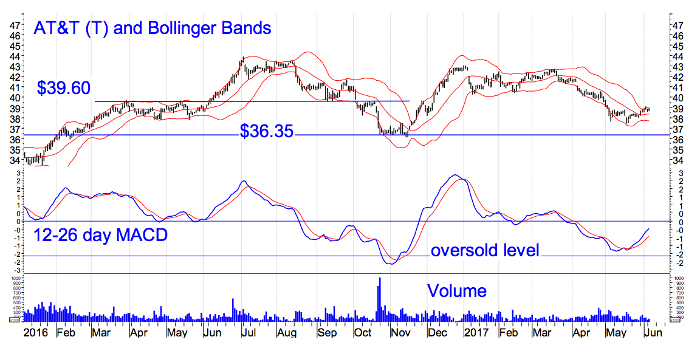Until a year ago, the total return of AT&T (T) had kept pace with the S&P 500 Index (1988-2016). But the past eleven months have not been kind to T, which has lost more than 5% while the S&P 500 has gained 20%, says Marvin Appel, editor of Systems & Forecasts.
In an environment where yield is hard to find, this looks like a propitious time to add to positions in AT&T. If you have been a long term holder as I have been, I recommend sticking with the stock and that our patience will be rewarded. AT&T currently yields 5%.
Earnings are barely enough to cover the dividend, but since depreciation exceeds capital expenditures by about 15%, free cash flow does include a greater margin of safety to protect the dividend than earnings alone might suggest.
In terms of drawdown risk, during recent market corrections this single stock has held up better than the S&P 500 Index. (This was the case during the 2007-2009 bear market, and the 2011 and 2015-2016 market corrections.)
However, at other times such as in August-November 2016 or this year to date, AT&T has suffered significant declines during periods when the S&P 500 held up well.
This means that you should not expect this single stock to be safer than the S&P 500 Index over the long term. However, it is reasonable to project that overweighting it in your portfolio can modestly reduce your equity risk through diversification.
I believe that it is reasonable for this one stock to represent up to 5% of an otherwise diversified equity portfolio as a rule of thumb, although of course the individual situation of any particular investor might call for a different level of exposure. Since AT&T has been beaten up this year, it has fallen towards a potential long term support level of $36.35.
Its MACD has also fallen to a long term oversold level and has turned up, generating what appears to be an attractive buy signal (albeit one not yet confirmed by any positive divergences or double rising bottom formations). This is shown in the chart below.
In addition to long term holding, we have found AT&T to be attractive for covered call writing using longer term options. For example, as of closing prices on 6/7/17, you could have bought T at $38.76 and written covered 39 calls expiring on 1/19/2018 at $1.34.
You would, in addition to the time value, collect up to three quarterly dividend payments of $0.49. That totals a maximum total return of 7.25% if the stock finishes at expiration at the same as today’s close, or 7.9% if the stock is at $39 or higher at expiration. This is a very attractive return over a period of less than 7½ months.



















